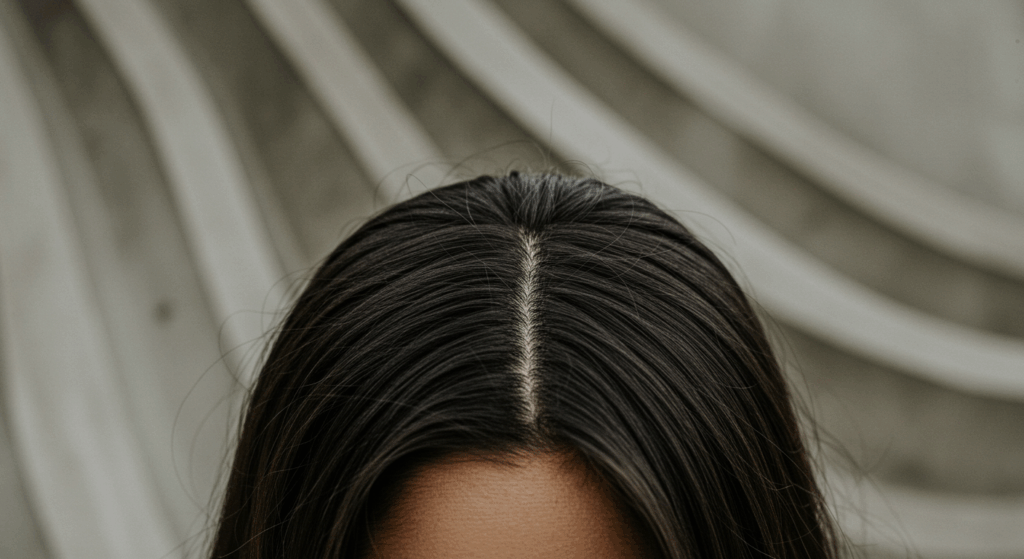Are you tired of receding hairlines or thinning hair that affects your confidence? The quest for a natural-looking hairline has led to groundbreaking advancements in hair restoration. Among these, the trichophytic hairline incision stands out as a revolutionary technique, offering results that traditional hair transplant methods often struggle to match.
In this comprehensive guide, we delve into the intricacies of trichophytic hairline incisions, compare them with traditional hair transplant techniques, and explore why this method is becoming the gold standard for patients seeking undetectable, natural hairlines. Whether you’re considering a hair transplant or simply curious about the latest innovations, this article will equip you with the knowledge to make an informed decision.

Table of Contents
Understanding the Trichophytic Hairline Incision
What Is a Trichophytic Hairline Incision?
The trichophytic hairline incision is a specialized surgical technique designed to create a hairline that appears completely natural. Unlike traditional methods that may leave visible scars or an unnatural hairline, this technique involves making an incision along the hairline that allows hair to grow through the scar tissue. This results in a seamless transition between the forehead and the hair-bearing scalp.
How Does It Work?
The procedure involves the following steps:
- Precision Incision: A surgeon makes a meticulously planned incision along the desired hairline. The incision is designed to be irregular, mimicking the natural edge of a hairline.
- Hair Follicle Preservation: Hair follicles are carefully preserved at the edge of the incision. This allows hair to grow through the scar, camouflaging it effectively.
- Closure Technique: The incision is closed using advanced suturing methods that minimize tension and promote optimal healing.
- Healing and Growth: As the incision heals, hair begins to grow through the scar, creating a natural-looking hairline that is virtually undetectable.
Benefits of Trichophytic Hairline Incision
| Benefit | Description |
|---|---|
| Natural Appearance | Hair grows through the scar, eliminating visible lines and creating a seamless hairline. |
| Minimal Scarring | The technique reduces the appearance of scars, making them nearly invisible. |
| Versatility | Suitable for both men and women, and adaptable to various hairline shapes and densities. |
| Long-Term Results | Provides permanent results with proper care and maintenance. |
Traditional Hair Transplant Techniques: An Overview
Follicular Unit Transplantation (FUT)
FUT, also known as the strip method, involves removing a strip of scalp from the donor area (usually the back of the head). The strip is then dissected into individual follicular units, which are transplanted into the recipient area. While effective, FUT can leave a linear scar, which may be visible if the hair is worn short.
Follicular Unit Extraction (FUE)
FUE is a more modern technique where individual hair follicles are extracted from the donor area using a punch tool. These follicles are then implanted into the recipient area. FUE is less invasive than FUT and leaves minimal scarring, but it may not be as effective for creating a perfectly natural hairline, especially in cases of significant hair loss.
Limitations of Traditional Techniques
- Visible Scarring: Both FUT and FUE can leave scars that may be noticeable, particularly with shorter hairstyles.
- Less Natural Hairline: Traditional methods may not achieve the same level of naturalness as trichophytic incisions, especially in the hairline region.
- Longer Recovery: Recovery times can be longer, with more post-operative care required.
- Limited Versatility: Traditional techniques may not be suitable for all hair types or levels of hair loss.

Trichophytic Hairline Incision vs Traditional Techniques: A Comparative Analysis
Key Differences
| Feature | Trichophytic Hairline Incision | Traditional Techniques (FUT/FUE) |
|---|---|---|
| Scarring | Minimal and hidden by hair growth | Visible linear scar (FUT) or dot-like scars (FUE) |
| Natural Hairline | Highly natural, seamless transition | May appear less natural, especially at the hairline |
| Recovery Time | Shorter, with less post-operative care | Longer, with more intensive aftercare |
| Versatility | Suitable for all hair types and densities | May be limited by hair type or extent of hair loss |
| Long-Term Results | Permanent, with hair growing through the scar | Permanent, but scars may remain visible |
Which Technique Is Right for You?
The choice between a trichophytic hairline incision and traditional techniques depends on several factors, including:
- Hair Loss Extent: Trichophytic incisions are ideal for those seeking a natural hairline, while traditional methods may be better for extensive hair loss.
- Hair Type: The trichophytic technique is versatile and works well with all hair types, while traditional methods may have limitations.
- Desired Hairstyle: If you prefer shorter hairstyles, the trichophytic method’s minimal scarring is a significant advantage.
- Budget and Recovery Time: Consider the cost and downtime associated with each method. Trichophytic incisions often require less recovery time.
For a more detailed comparison, explore our Hair Transplant Guide.
Who Is an Ideal Candidate for a Trichophytic Hairline Incision?
Suitability Criteria
The trichophytic hairline incision is ideal for individuals who:
- Have a receding hairline or thinning hair at the frontal region.
- Desire a natural-looking hairline without visible scarring.
- Are in good overall health and have realistic expectations.
- Have sufficient donor hair to achieve the desired density.
Who Should Consider Traditional Techniques?
Traditional hair transplant techniques like FUT or FUE may be more suitable for:
- Individuals with extensive hair loss requiring a large number of grafts.
- Those who prefer a more cost-effective solution.
- Patients with specific medical conditions that may affect healing.
For more insights on choosing the right technique, visit our page on Hair Transplants After FFS.
What to Expect During and After the Procedure
Pre-Procedure Preparation
Before undergoing a trichophytic hairline incision, your surgeon will conduct a thorough consultation to assess your hair loss pattern, donor hair availability, and overall health. You may be advised to avoid certain medications or supplements that can increase bleeding risk.
During the Procedure
The procedure is typically performed under local anesthesia and can take several hours, depending on the complexity. The surgeon will:
- Mark the desired hairline based on your facial structure and aesthetic goals.
- Make the trichophytic incision along the marked hairline.
- Carefully close the incision to promote optimal healing and hair growth.
Post-Procedure Care
After the procedure, you’ll receive detailed aftercare instructions, which may include:
- Keeping the incision area clean and dry.
- Avoiding strenuous activities for a specified period.
- Using prescribed medications to manage discomfort and prevent infection.
- Attending follow-up appointments to monitor healing progress.
For more information on recovery and aftercare, check out our Hair Transplant in Turkey page.
Potential Risks and Complications
Common Risks
While the trichophytic hairline incision is generally safe, potential risks include:
- Infection: Rare but possible if post-operative care instructions are not followed.
- Scarring: Although minimal, some scarring may occur if healing is not optimal.
- Temporary Numbness: Some patients experience numbness around the incision area, which usually resolves over time.
- Hair Growth Variability: Hair growth through the scar may vary among individuals.
Mitigating Risks
To minimize risks, it’s essential to:
- Choose a qualified and experienced surgeon.
- Follow all pre- and post-operative care instructions diligently.
- Attend all scheduled follow-up appointments.
- Maintain a healthy lifestyle to support healing.
Cost Considerations: Trichophytic Hairline Incision vs Traditional Techniques
Factors Influencing Cost
The cost of a trichophytic hairline incision can vary based on several factors, including:
- Surgeon’s Expertise: Highly experienced surgeons may charge more for their services.
- Geographic Location: Costs can differ significantly depending on the country or city where the procedure is performed.
- Complexity of the Procedure: The extent of hair loss and the desired hairline design can affect the overall cost.
- Clinic Facilities: State-of-the-art facilities may come with higher price tags.
Cost Comparison
| Technique | Average Cost Range (USD) | Notes |
|---|---|---|
| Trichophytic Hairline Incision | $5,000 – $15,000 | Cost varies based on surgeon expertise and location. |
| FUT | $4,000 – $12,000 | Generally more affordable but may leave visible scarring. |
| FUE | $6,000 – $18,000 | More expensive than FUT but offers minimal scarring. |
For a detailed breakdown of costs, visit our Hair Transplant Cost UK page.
Frequently Asked Questions (FAQs)
Is the trichophytic hairline incision painful?
The procedure is performed under local anesthesia, so you should not feel pain during the surgery. Some discomfort may occur during the recovery period, but this can be managed with prescribed medications.
How long does it take to see results?
Initial healing typically takes 1-2 weeks, but it may take several months for the hair to grow through the scar and achieve the final result. Full results are usually visible within 6-12 months.
Can the trichophytic hairline incision be combined with other hair restoration techniques?
Yes, the trichophytic hairline incision can be combined with FUE or FUT to enhance overall hair density and achieve a more comprehensive restoration.
Are there any restrictions after the procedure?
You may be advised to avoid strenuous activities, swimming, and direct sun exposure for a few weeks post-procedure. Your surgeon will provide specific guidelines based on your individual case.
Is the trichophytic hairline incision suitable for women?
Yes, this technique is suitable for both men and women seeking a natural-looking hairline. It is particularly beneficial for women experiencing frontal hairline thinning.
How do I choose the right surgeon for a trichophytic hairline incision?
Look for a surgeon with extensive experience in trichophytic techniques. Review before-and-after photos of their work, read patient testimonials, and ensure they are board-certified in hair restoration surgery.
What is the success rate of trichophytic hairline incisions?
The success rate is high when performed by an experienced surgeon. Most patients achieve a natural-looking hairline with minimal scarring. Success depends on proper technique, post-operative care, and individual healing factors.
Can I undergo a trichophytic hairline incision if I have had previous hair transplants?
Yes, it is possible to undergo a trichophytic hairline incision even if you have had previous hair transplants. Your surgeon will evaluate your specific case to determine the best approach.
Conclusion: Making an Informed Decision
Key Takeaways
- The trichophytic hairline incision offers a natural-looking hairline with minimal scarring, making it ideal for those seeking undetectable results.
- Traditional techniques like FUT and FUE are effective but may leave visible scars and require longer recovery times.
- The choice between techniques depends on individual needs, hair type, and aesthetic goals.
- Consulting with a qualified surgeon is essential to determine the best approach for your specific case.
Next Steps
If you’re considering a trichophytic hairline incision or any hair restoration procedure, the next steps are:
- Research qualified surgeons in your area or consider traveling to renowned clinics abroad, such as those in Turkey. Learn more about Hair Transplant in Turkey.
- Schedule consultations to discuss your goals and assess your suitability for the procedure.
- Review before-and-after photos and patient testimonials to gauge the surgeon’s expertise.
- Prepare for the procedure by following your surgeon’s pre-operative instructions.
For further reading, explore our Comprehensive Hair Transplant Guide.
Visit Dr.MFO Instagram profile to see real patient transformations! Get a glimpse of the incredible results achieved through facial feminization surgery and other procedures. The profile showcases before-and-after photos that highlight Dr. MFO’s expertise and artistic vision in creating natural-looking, beautiful outcomes.
Ready to take the next step in your journey? Schedule a free consultation with Dr. MFO ( Best Facial Feminization Surgeon for You) today. During the consultation, you can discuss your goals, ask any questions you may have, and learn more about how Dr. MFO can help you achieve your desired look. Don’t hesitate to take advantage of this free opportunity to explore your options and see if Dr. MFO is the right fit for you.





